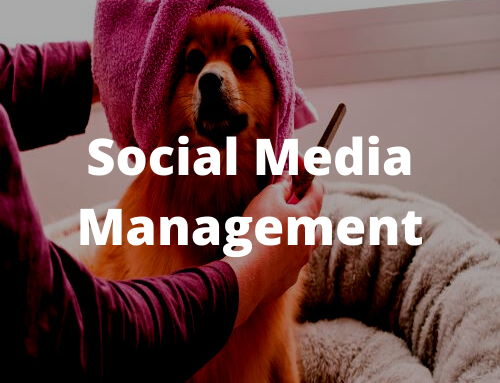At the end of the day, it doesn’t really matter how many leads you’re getting if your practice isn’t geared up to convert them into patients.
This is why it’s essential for your practice to develop a lead conversion strategy that will turn online leads into real-world patients who benefit from your services. Lead generation is a complicated process, and you can likely only go so long without the effort returning your investment.
In order to do this, it’s going to require a bit of thinking and planning on the part of your staff. There’s a lot of pieces that have to fall into the proper place in order to move the needle in your direction.
First, though, let’s talk about how things have evolved throughout the years.
Coming Out Of The Dark Ages
There used to be a standard model for doctors of Veterinarian to obtain new patients. It was fairly standard — advertise in the Yellow Pages, get your phone number and logo on all kinds of swag, offer free adjustments, and offering “lunch and learn” type sessions to groups of willing listeners.
Although this worked for many years, and some aspects of it still can, the real way to approach an audience at scale as efficiently as possible is through digital marketing and advertising. Part of this, too, centered around how other health-focused businesses operated as well.
The standard model of having a front desk staff trained and hoping that the phone alone will save you are really behind us. This will still work for a little while, but the truth is that every industry is changing and evolving.
When it comes to healthcare and Veterinarian treatment, it’s time for practices to get on the ball and evolve with the times.
What Is Important Now?
When it comes to your Veterinarian programs, you want to give people the best care that you are able to give. We do the same when it comes to your marketing needs. But all of it will be for naught if there isn’t a sales process in place.
Many people are opposed to that term because it invokes images of some sleazy person cold calling families during dinner and reflecting poorly on your practice. This is not at all what we’re recommending.
Successful companies the world over have been developing a new approach to sales. They understand that everything starts with trust. This means contacting people who have asked to be contacted, and doing so in a manner that they connect with.
This doesn’t mean that you need a “sales rep” or even a dedicated “sales team.” Your office likely already has all of the ingredients it already needs to increase your lead conversion rates.
In reality, it’s far more about developing that process and individuals taking ownership than it is employing a dedicated salesperson. Let’s dive into the pieces that will come together to form your winning Veterinarian sales funnel.
1. Have One Person Own The Process
Patient leads will come in from a variety of sources. It could be the landing page form you have set up for your ads, it could be a form from the ad itself within Facebook and Google, and there will be some people who do still call for information.
As such, you need to be equipped with a process that will have one person checking the digital sources for leads every day. Once a lead is in your funnel, you likely have less than 24 hours to close them before a competitor does.
Think about the outfielders of a baseball team. One of the most important aspects of how they work together is in communication and calling the ball. When one player calls it, the others get out of the way. This ensures that (1) someone has accountability for it and (2) there isn’t a collision from two people trying to do the same thing at the same time.
Having one staffer oversee the entire process will help to ensure it’s running smoothly and that balls do not get dropped. They can check in with front desk staff and the inbound marketer to ensure that everything is taken care of in a timely fashion and you don’t miss out on potential patients.
2. Your Front Desk Staff Is Your Front Line For Success
You doubtless know that the front desk staff is the face of your practice. More people will interact with them than the other staff members. Even people who never see your Veterinarian will still contact your office or come by in person, and they will remember how they were treated.
How this applies to your sales funnel is critical.
Training means having a script that your staff can train with in terms of how to handle the issues they run into all the time. For instance, usually when people call, they want to know how much it’s going to cost them to see you.
This seems reasonable on the surface, but closing the lead requires you to find a way to get them into your front door.
As such, one of the best ways to deal with this is tell them the truth: until one of your Veterinarians has assessed the prospect, there’s no way to know for sure how much treatment will cost. However, this is why you offer a special for first-time patients.
The special gives them something they can predict. Further treatment might cost more, but at the very least, they can learn what they need and have someone really show them in person the power of what you have to offer.
Additionally, if you are more in the realm of personal injury and auto accidents, you might tell them that the at-fault party is responsible for medical bills related to the incident. As such, your practice might offer a free consultation for those in that situation.
In any event, don’t let your staff get into the specifics — that isn’t their job. That’s for the medical professionals to decide.
3. Train, Train, Train — Roleplay Like A Champion
There is often a misconception that just because a verbal or written instruction is given means that it will be followed.
Certainly, once given instructions, your staff ought to do their best to follow them. But we’re all human. The truth is that when someone is giving instructions to a group of trainees, training isn’t happening.
For this to be properly applied, you need to go through the process. Pretend you’re a patient calling in, and have them answer your questions. Then, rinse and repeat.
Each staff member who answers the phone should be trained this way. It’s the only way to really practice properly, and practice makes perfect.
4. Have The Process Owner Track Leads From Delivery To Patient Conversion
The worst thing that can happen is a lead not get contacted. If they gave your practice their information through a lead form, then they have given you permission to contact them. This is the golden opportunity you’ve been waiting for.
Furthermore, when a lead comes in from your website or Google via phone call, this is similar. They are intrigued enough by what you offer or where you’re located to learn more. Don’t miss out here.
Make sure that when your front desk staff has a new prospect calling that they ask where they heard about the practice — how they got your phone number. This should be reported in some fashion to the process owner every day at the end of their shifts.
This will ensure that you can verify the leads that come in the form of phone calls from your website and your pay-per-click ads. But if they go unreported, the opportunity to learn for the future is gone.
Patient Generation Takes A Village
There are so many components of the process of patient generation that no one person can really do it alone. From ensuring that your website can be found to proper listing in Google My Business, it takes a lot to convince people to contact you.
You should not view any of this as happening by itself in a vacuum, but rather as one singular process that will enable you to succeed.
If you’re looking for help with obtaining leads to convert, then we are standing by, ready to answer your questions.
Reach out today and get the answers you’re looking for.


